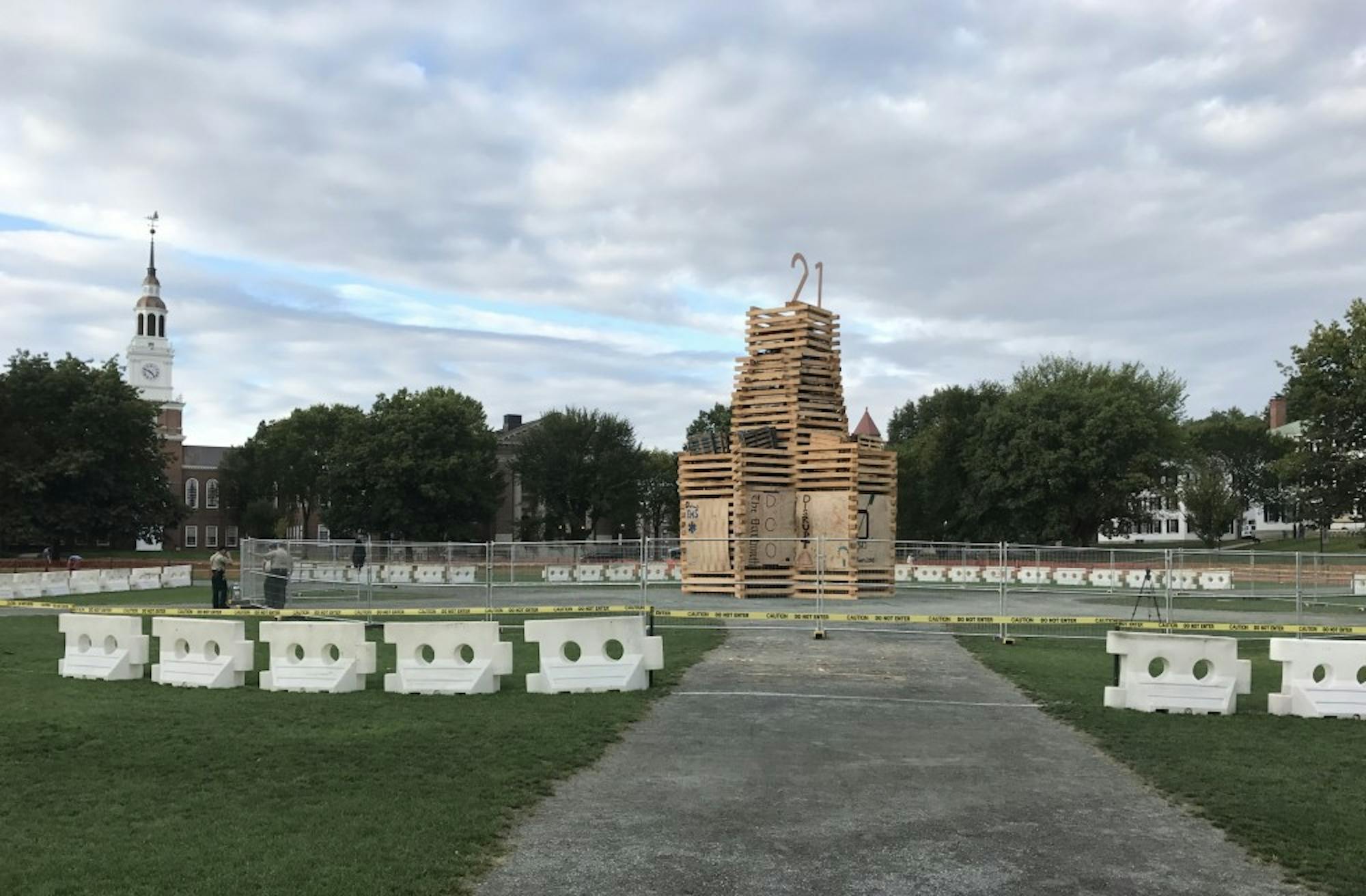On May 29, Hanover officials emailed the College notifying them that unless changes are made to the design and implementation of the College’s traditional Homecoming bonfire, the Town of Hanover will not sign an outdoor activities permit for it. On June 25, the College appointed a working group to design an alternative bonfire design that town officials can approve of. The working group is chaired by associate professor of engineering Douglas Van Citters and consists of representatives from College faculty and staff, alumni and Dartmouth Safety and Security. At least two members of the Class of 2020 and two alumni will also be appointed.
The town’s email to the College cited concerns that the bonfire structure could collapse and injure attendees, asserted the town’s inability to obtain insurance to staff the event and noted the event’s “adverse effect on student-police relations during a celebration designed to build community,” Lawrence said in an email.
Town manager Julia Griffin said that this notification should not be a surprise for the College.
“We’ve had concerns about the bonfire for years,” Griffin said. “Not so much about the bonfire itself — it’s about some of the student behavior that occurs at the bonfire, [which] can lead to [the bonfire] being a much more dangerous event than it needs to be.”
Griffin said she can remember the town being concerned about the safety of the bonfire since 1996. Students’ “level of risky behavior ebbed and flowed over the years,” but the decision to stop authorizing the bonfire under its current plan was largely because of the “recent push to touch the fire,” Griffin said.
“[Public safety officials] don’t need to be [at the bonfire] to prevent students from doing stupid things like burn themselves,” she said. “We’re there to protect them from a catastrophic collapse onto them.”
According to Griffin, each of the beams in the three-story-tall bonfire structure weighs between 75 to 80 pounds, and for four out of the past five years, the structure burned to collapse outwards into the calculated collapse zone around it rather than collapsing into itself. She said the problem is that students do not respect the collapse zone because of the campus culture of touching the fire. This also puts town-affiliated public officers, who pursue students who enter the collapse zone, at risk.
Griffin said that this past October, the town’s response to the tradition of touching the fire was to ask the College to erect a physical impediment: a “six foot-high fence around the parameter of the collapse zone.” However, Griffin said she was surprised to see that this measure was not enough.
“One of the guys from the class [of 2021], who truly, I think, is a gazelle … [went] up and over that fence … and [he] got to the fire so quickly to touch it that Safety and Security, the police and the firefighters couldn’t even react,” said Griffin. “Someone told me he’s a high-jumper. He certainly should be, if he’s not.”
According to Griffin, the town recognizes the event’s popularity, the importance of tradition to the Dartmouth community and the fact that there hasn’t been any serious injuries or deaths since the start of the tradition in 1888. Regardless, Griffin said that the safety hazard the event poses on students, the “33 to 35 public safety individuals” that secure the Green for the bonfire and other attendees is too great to ignore.
“If you’ve got the potential for loss of life, we just can’t be part of the event any longer,” Griffin said. “It’s up to the College to decide: they can take all the liability themselves, or revise the design.” Griffin recommends a 15-foot, round-shaped, mounded bonfire made of light material like brush as opposed to burning the current 35-foot timber structure.
Additionally, Griffin said that she is concerned with the method the College uses to ignite the bonfire, which to her knowledge is a method that had been practiced by the College since 1989.
“The Department of Environmental Services made it clear to us that [pouring] 30 gallons, give or take, of kerosene or diesel fuel … on the fire to help it ignite [is] not legal,” Griffin said.
DES notified the town that the College must start the bonfire with natural sources and flammable material like shavings or paper, according to Griffin.
Lawrence said that the College was unaware that this practice was a violation, and now that the College has been notified it will be discontinued. However, Lawrence noted that there was a misunderstanding, as the College had only been using 15 gallons of kerosene as opposed to the 30 gallons that both the town and the DES had believed was being used.
While the working group has not begun its meetings yet, it intends to find an optimal balance between new safety measures and preserving the tradition, Lawrence said.
“The group will consider all of the town’s concerns and suggestions, property and liability insurance requirements and the needs and interests of the Dartmouth community related to the bonfire,” Lawrence said. ‘We know how important it is to honor Dartmouth’s traditions and unique spirit and we also understand that traditions have always and will continue to evolve.”
Bonfire build chair for Homecoming 2017 Mary Tobin ’20 said that she is not surprised that the town is demanding changes to the bonfire to ensure safety, not because of the structure of the bonfire, but because of “the culture of trying to touch the fire.” Tobin said that though the construction process was safe, with experienced adults supervising the build and all students wearing “harnesses and hard hats,” 50 members of her class touched the fire and some “[bragged] that we’re the best class.”
Even so, Tobin expressed disappointment that the sentiment of the bonfire tradition is in jeopardy.
“When you’re a freshman running around this big flame and you’re running around the mud pit with all your friends and [other] students, it’s this incredible experience that’s not replicated in any [other] way,” Tobin said.
However, Tobin said that she believes that Hanover residents “really like the Dartmouth culture and Dartmouth traditions,” and these calls for safety measures do not come from a “bad relationship” with the College. She said she remains positive about next year’s bonfire.
Tobin also emphasized the importance of student representation for the working group.
“I think student perspective is important as well, since [the bonfire] is done on students’ behalf,” Tobin said. “I think having student perspective to see whether [the suggested alternatives] would also have the grandiose … feeling we all know and love or [would] fall flat … can help bridge the different communities and create a compromise that everyone can be excited about.”





